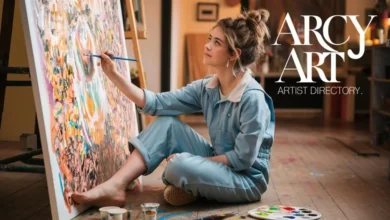The Ultimate Guide to Gouache Painting for Beginners
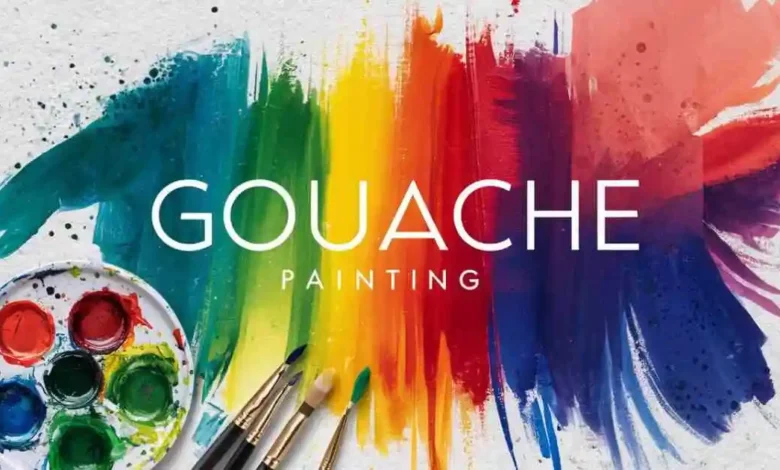
Gouache painting is a fascinating medium that offers a unique blend of watercolor and acrylic qualities. Whether you’re an experienced artist looking to explore new techniques or a beginner eager to start your artistic journey, gouache painting has something special to offer. This guide is designed to introduce you to the world of gouache paint, provide essential tips, and inspire your next creative project.
What is Gouache Painting?
Gouache painting is a versatile medium that combines the opacity of acrylics with the fluidity of watercolors. Many artists love it for its vibrant colors and ease of use. Gouache paint is made by mixing pigment with a binding agent, typically gum arabic, and adding an inert white pigment such as chalk, which gives it its opaque quality.
Unlike watercolors, gouache paint doesn’t require layers upon layers to achieve a rich, vibrant look. A single coat often suffices. This makes it an excellent choice for artists who want to create bold, striking images quickly. Additionally, gouache can be reactivated with water even after it has dried, allowing for easy corrections and adjustments.
Overall, gouache painting offers a wide range of creative possibilities, making it a favorite among both amateurs and professional artists.
Why Choose Gouache Paint?
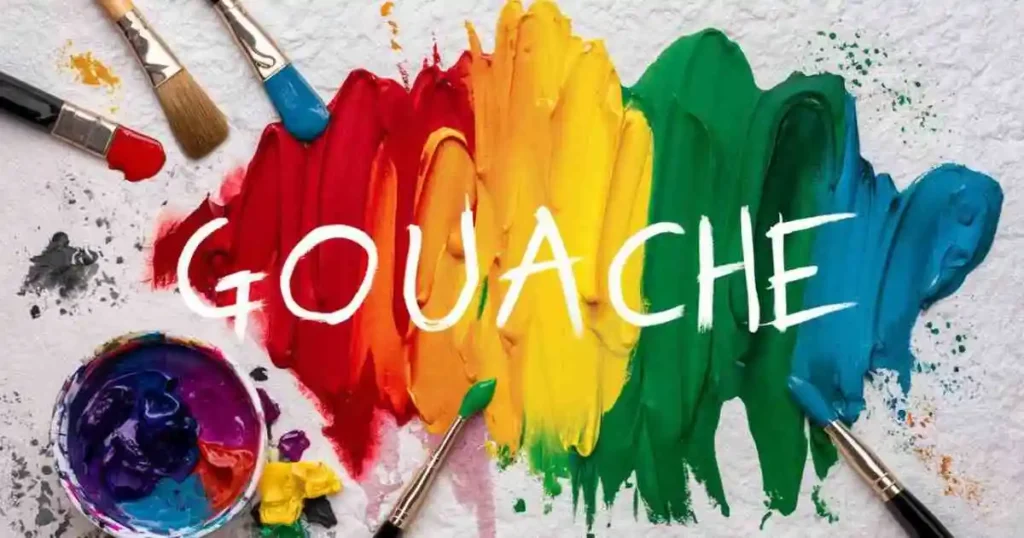
Choosing gouache paint opens up a world of benefits. One major advantage is its versatility. Unlike watercolor, gouache can be applied in thick, opaque layers, making it ideal for achieving bright, bold colors.
Another appealing feature is gouache’s rewettable nature. If the paint dries on your palette, you can easily reactivate it with water. This means less waste and more flexibility during your painting sessions.
Additionally, a set of gouache paints typically includes a variety of colors, providing artists with a broad spectrum to work with. The pigments are often more vibrant than those found in watercolors, giving your artwork a unique pop.
Essential Supplies for Gouache Painting
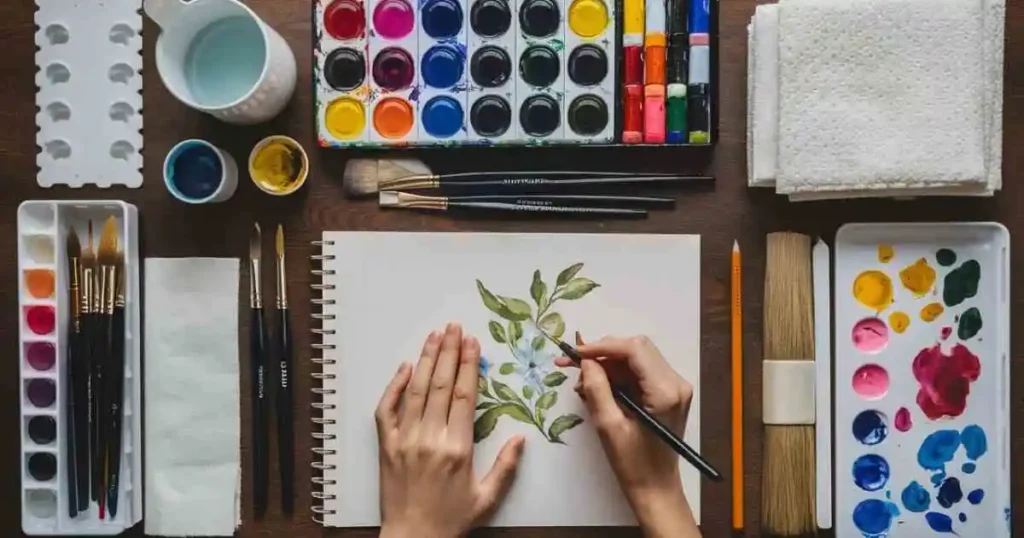
Before you start your gouache painting adventure, you’ll need some essential supplies. The good news is that getting started with gouache painting doesn’t require a significant investment. Here’s a list of what you’ll need:
Gouache Paint Set
A good quality set of gouache paints is crucial. Look for sets that offer a range of colors, including primary colors, black, and white. High-quality gouache paint sets will provide better pigmentation and smoother application, making your painting experience much more enjoyable.
Brushes
Different brushes serve different purposes in gouache painting. Flat brushes are excellent for broad strokes and covering large areas, while round brushes are perfect for details and precision work. Invest in a few high-quality brushes to get started.
Palette
A palette is essential for mixing colors. You can use a traditional wooden or plastic palette, or even a ceramic plate. The important thing is to have a surface where you can blend your colors freely.
Paper
Gouache works best on heavy paper that can handle moisture without warping. Watercolor paper is an excellent choice because it is thick and absorbent. Consider using cold-pressed watercolor paper for a textured finish or hot-pressed paper for a smoother look.
Other Supplies
Don’t forget to gather other essential supplies like a water container for rinsing brushes, paper towels for drying them, and a pencil for sketching initial designs. With these supplies in hand, you’ll be well-prepared to start your gouache painting journey.
Building Your Gouache Paint Set
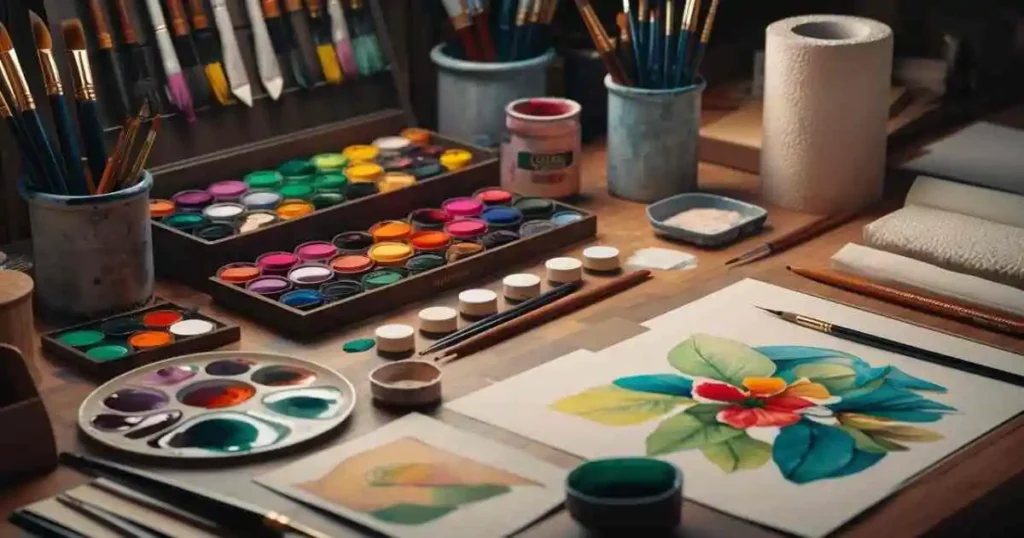
Choosing the right set of gouache paints is crucial for your painting experience. For those just starting, consider investing in a beginner-friendly set that includes a range of colors without breaking the bank. Brands like Arteza and Reeves offer affordable options with decent quality.
For artists looking to take their gouache painting to the next level, professional-grade sets from Winsor & Newton, Holbein, and M. Graham provide superior pigmentation and consistency. These brands offer individual tubes and larger sets, allowing you to customize your collection based on your needs.
Remember, the quality of your materials can significantly impact your artwork. While it might be tempting to opt for the cheapest set, investing in quality paints can make a noticeable difference in your final piece.
ALSO READ ABOUT HIGHER EDUCATION LOAN AUTHORITY OF THE STATE OF MISSOURI NEWS
Step-by-Step Gouache Painting Techniques
Ready to start painting? Follow these step-by-step techniques to create your first masterpiece with gouache paints.
Preparing Your Workspace
Start by setting up a clean, well-lit workspace. Arrange your supplies within easy reach and tape your paper to a flat surface to prevent it from moving around.
Sketching Your Design
Using a pencil, lightly sketch your design onto the paper. This will act as a guide when you start applying the paint. Don’t worry about making the sketch perfect; it’s just a roadmap for your painting.
Mixing Colors
Squeeze a small amount of gouache paint onto your palette. Use your brush to mix colors as needed. Remember that gouache dries a bit darker than it appears when wet, so adjust your mixes accordingly.
Tips for Creating Stunning Gouache Art
Creating beautiful gouache art takes practice and a few insider tips. Here are some key pointers to help you along the way:
Layering Techniques
One of the most exciting aspects of gouache painting is its ability to layer colors. Start with lighter colors and gradually add darker shades. Unlike watercolors, gouache allows you to paint light over dark, providing flexibility in your art.
Blending and Gradients
Gouache is excellent for blending and creating smooth gradients. Working quickly is essential, as gouache can dry relatively fast. Use a damp brush to blend edges and create seamless transitions between colors.
Detailing
Once your base layers are dry, you can add fine details with a smaller brush. Gouache’s opaque quality makes it perfect for adding intricate details and highlights that stand out.
Common Mistakes in Gouache Painting and How to Avoid Them
Every artist makes mistakes, but learning from them is the key to improvement. Here are some common mistakes in gouache painting and how to avoid them:
Overworking the Paint
Gouache can become muddy if overworked. To prevent this, avoid going over the same area repeatedly. Instead, allow layers to dry before adding more paint.
Incorrect Water Ratio
Finding the right balance of water and paint is crucial. Too much water can make the paint too translucent, while too little can make it difficult to work with. Experiment with different ratios to find what works best for you.
Neglecting Paper Quality
Low-quality paper can warp and buckle when wet, ruining your painting. Invest in good quality watercolor paper to ensure your gouache paintings remain smooth and flat.
Exploring Advanced Gouache Painting Techniques
Once you’ve mastered the basics, it’s time to explore more advanced techniques to elevate your gouache art.
Dry Brush Technique
The dry brush technique involves using minimal water on your brush to create a textured, scratchy effect. This technique is perfect for adding texture and details to your painting.
Glazing
Glazing involves applying a thin, transparent layer of gouache over a dry layer of paint. This technique can create depth and richness in your artwork. Use it sparingly to enhance specific areas.
Sgraffito
Sgraffito is a technique where you scratch through a layer of wet paint to reveal the layer underneath. Use a palette knife or the end of your brush to create interesting textures and patterns.
Inspiration and Ideas for Your Next Gouache Painting Project
Looking for inspiration? Here are some ideas to get your creative juices flowing:
Nature Scenes
Capture the beauty of nature with gouache. Paint landscapes, flowers, or animals, and experiment with different color palettes to bring your scenes to life.
Abstract Art
Gouache is perfect for abstract art due to its bold colors and opacity. Create geometric patterns, fluid shapes, or explore color theory with abstract compositions.
Portraits
Challenge yourself with portrait painting. Gouache’s blending capabilities make it ideal for capturing skin tones and facial features with precision.
ALSO READ ABOUT HIGHER EDUCATION LOAN AUTHORITY OF THE STATE OF MISSOURI NEWS
Maintaining and Storing Your Gouache Paintings
Proper maintenance and storage will ensure your gouache paintings last for years to come.
Sealing Your Work
While gouache is water-soluble, you can protect your finished paintings by sealing them with a fixative spray. This will prevent smudging and keep your artwork intact.
Storing Paints
To keep your gouache paints fresh, store them in an airtight container. If they dry out, you can revive them with a few drops of water and thorough mixing.
Displaying Your Art
Frame your gouache paintings under glass to protect them from dust and moisture. Hang them in a cool, dry place away from direct sunlight to prevent fading.
How to Use Gouache Paint
Gouache paint is versatile and easy to use, making it perfect for both beginners and experienced artists. Here’s a quick guide on how to use gouache paint effectively:
- Prepare Your Workspace: Gather your supplies including gouache paints, brushes, palette, water, and paper. Set up a clean, well-lit area to work in.
- Mix Your Colors: Use a palette to mix your gouache paints. You can mix them with a small amount of water to achieve the desired consistency.
- Start with Light Layers: Begin painting with light, thin layers. Gouache is opaque, so you can easily layer colors on top of each other.
- Build Up Opacity: Add more layers to build up the opacity and richness of your colors. Allow each layer to dry before adding the next to prevent smudging.
- Use Different Techniques: Experiment with techniques like dry brushing, blending, and glazing to create various effects and textures.
- Add Details: Use smaller brushes for fine details and highlights. Gouache allows for precise work, so take your time to perfect your piece.
- Finish and Protect: Once your painting is complete, let it dry fully. Consider framing your artwork under glass to protect it from dust and damage.
Conclusion
Gouache painting is a versatile and rewarding art form that offers endless possibilities for creativity. Whether you’re a beginner or an experienced artist, there’s always something new to discover with gouache. By following the tips and techniques in this guide, you’ll be well on your way to creating stunning gouache art.
FAQs Gouache Painting
Q: What is gouache paint?
A: Gouache paint is a water-based medium known for its opaque and matte finish when dry. It consists of pigment, a binding agent (usually gum arabic), and often chalk or white pigment to increase opacity. Gouache can be reactivated with water even after drying, making it versatile for both detailed work and broad washes in painting.
Q: What is gouache painting, and how is it different from watercolor and acrylic?
A: Gouache painting uses opaque water-based paints that dry to a matte finish. Unlike watercolors, which are transparent, gouache allows for layering without colors underneath showing through. It differs from acrylics by its matte finish and ability to be reactivated with water even after drying.
Q: What are the essential supplies needed to start gouache painting?
A: Essential supplies include gouache paints (rich in pigment), various brushes (flat, round, detail), quality paper (watercolor or mixed media), palette for mixing colors, water for dilution and cleaning, and a palette knife for mixing and applying paint.
Q: How do you use gouache paints?
A: Gouache paints can be applied thinly like watercolors or layered thickly for opaque effects. They dry quickly and can be reactivated with water, allowing for corrections and adjustments even after drying.
Q: What techniques are used in gouache painting?
A: Common techniques include layering (building up colors), wet-on-dry (applying wet paint onto dry layers), wet-on-wet (blending wet paint on wet paper), dry brush (using minimal paint for texture), and masking (preserving areas with masking fluid or tape).
Q: How do you preserve and store gouache paintings?
A: To preserve gouache paintings, store them flat in a cool, dry place away from direct sunlight. Consider framing them under glass to protect from dust and physical damage.
